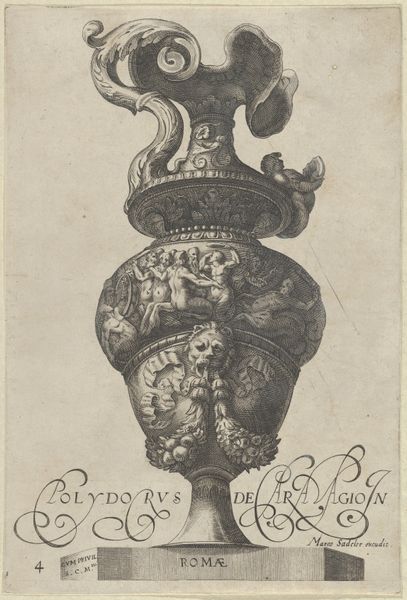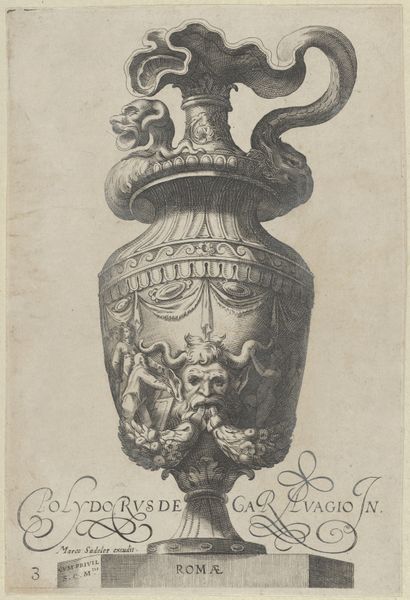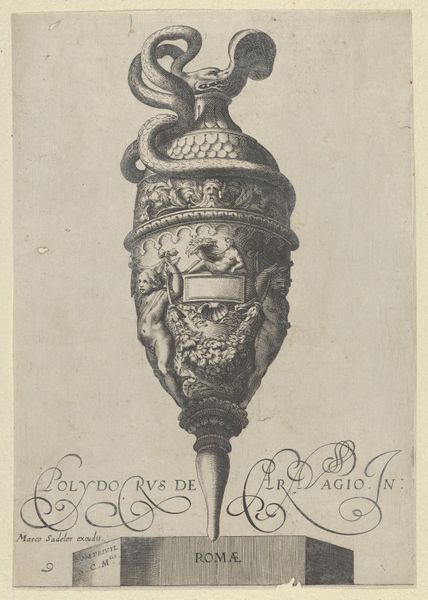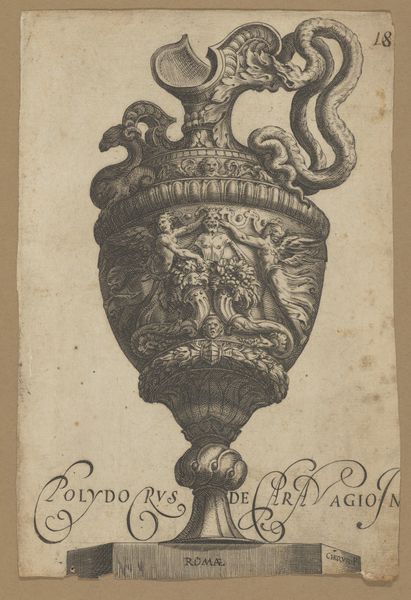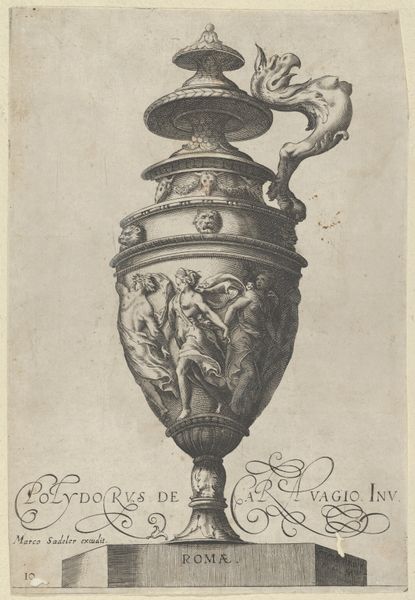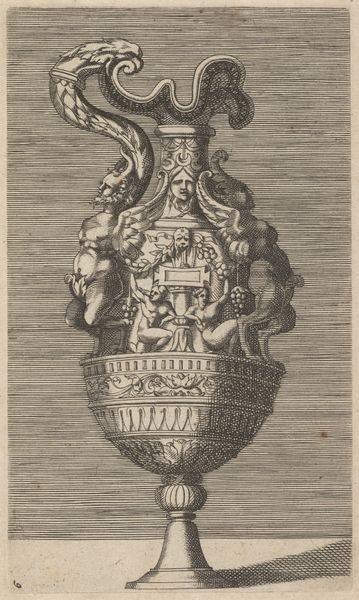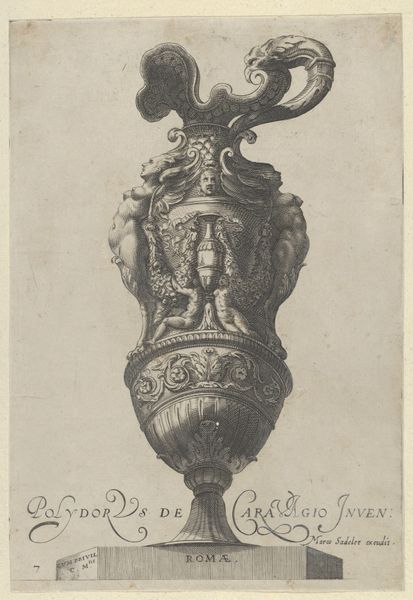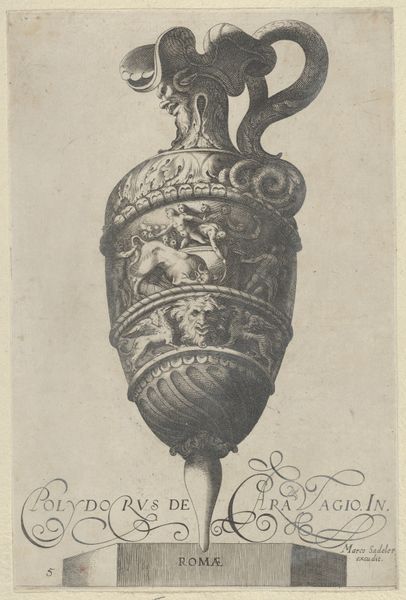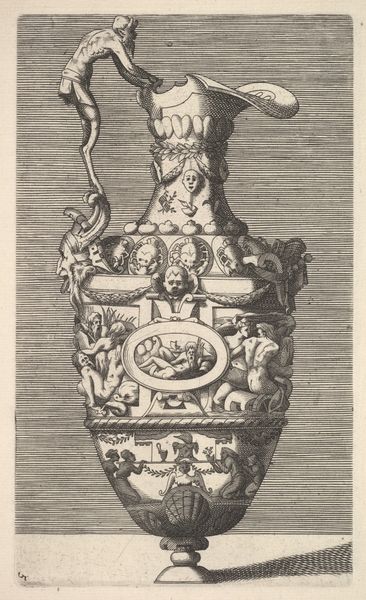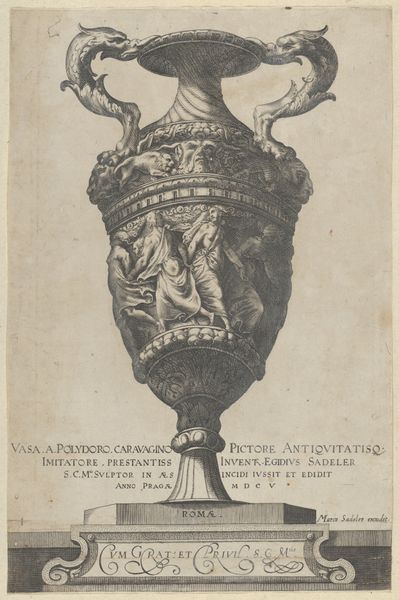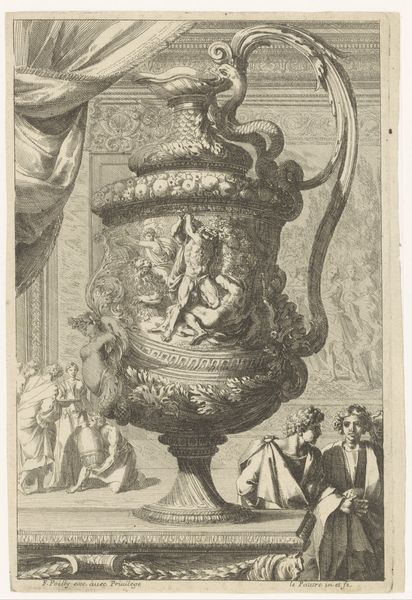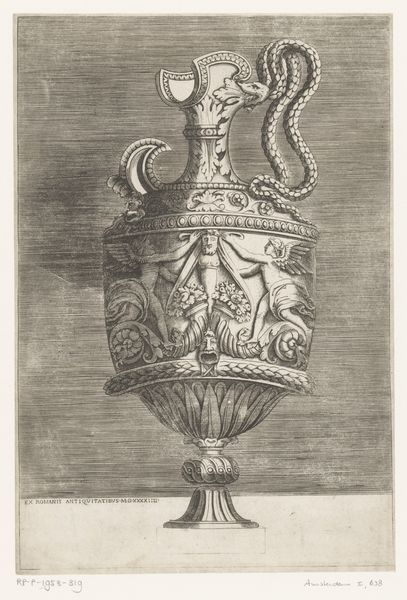
Plate 8: Vase or Ewer Decorated with a Satyr Figure, Behind Two Cornucopias, and Two Winged Victory Figures, from Antique Vases (‘Vasa a Polydoro Caravagino’) 1605
0:00
0:00
drawing, print
#
pencil drawn
#
drawing
#
toned paper
#
light pencil work
#
shading to add clarity
# print
#
pencil sketch
#
old engraving style
#
vase
#
personal sketchbook
#
limited contrast and shading
#
sketchbook drawing
#
sketchbook art
Dimensions: Sheet: 9 3/16 × 6 1/4 in. (23.3 × 15.8 cm)
Copyright: Public Domain
Editor: Here we have Aegidius Sadeler II's print, "Plate 8: Vase or Ewer Decorated with a Satyr Figure..." from 1605. It looks like an image of a vase, maybe meant for holding wine. All the figures decorating the surface give a celebratory, slightly chaotic vibe. What strikes you about this piece? Curator: What intrigues me is the labor involved in translating something three-dimensional into a two-dimensional print. Look at the textures, the way the artist meticulously renders the curves and the ornamentation of the vase. It points to the commodification of antiquity—prints like this made classical forms accessible, turning art into a consumer good. Editor: A consumer good? I never thought of it that way! So you're saying the print, itself, becomes a kind of object or commodity? Curator: Exactly! Consider the role of the engraver, Sadeler. He's not just copying; he's interpreting and marketing classical forms to a wider audience. This process divorces the form from its original elite context and places it within a new circuit of exchange, potentially influencing tastes and styles in workshops across Europe. How do you think its original audiences engaged with this imagery of opulence and classical reference? Editor: It is interesting how a print like this could democratize design. But what about the original vase? Did its materials communicate something different that the print couldn't capture? Curator: Precisely! The vase itself, likely made of precious metals or stone, signaled wealth and status in a very immediate, tactile way. The print, on the other hand, abstracts that materiality. The value shifts from the object itself to its reproducible image, democratizing access but altering the experience. Editor: So it’s about the change in function as much as appearance – one is for use, the other for distribution of visual language! That makes me see this print and, really, art from that period, in a completely different light. Curator: It becomes not just an image but an indicator of shifting social and economic forces within art making.
Comments
No comments
Be the first to comment and join the conversation on the ultimate creative platform.

